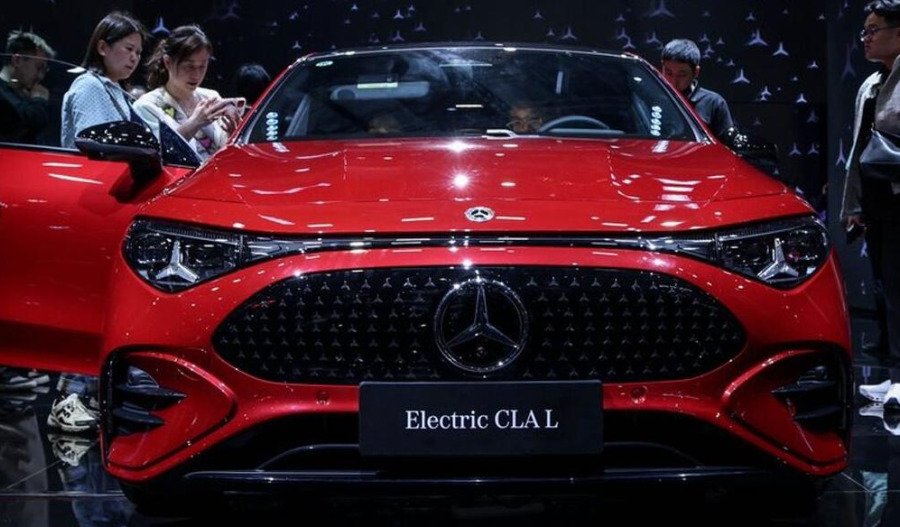As top brass from the United States and China meet in London for trade talks, the latter's rare earths export restrictions reveal a decades-long failure of Western industrial policy - and the uncomfortable truth about who really controls the 21st century's most vital resources.
Azzet’s Mission Critical is a weekly column that lays out the ebbs and flows around critical minerals supply chains; the geopolitical machinations that affect the industry - from pricing, production, refinement and mergers & acquisitions, to manufacturing and consumer products.
The chess pieces are moving with alarming speed across the global rare earths battlefield.
The U.S. delegation, including Treasury Secretary Scott Bessent and Commerce Secretary Howard Lutnick - is pressing China to lift its recent export ban on REEs and President Trump has expressed optimism that negotiations were "going well" after a phone call with China President Xi Jinping - where they're rumoured to have agreed to resume shipments.
Even if that happened, China can just as easily stop them too - so large is its stranglehold on the EV and battery value chains.
In early April, China placed export restrictions on rare earth elements as part of a sweeping response to U.S. President Donald Trump's tariffs, targeting seven critical REEs - including scandium, yttrium, and heavy rare earths (HREE) - essential for military applications.
The aftermath caused immediate supply chain disruptions across Western manufacturing sectors - especially in Europe - triggering global alarm among automakers who warn of production delays and outages.
The uncomfortable reality is that the United States is entirely dependent on China for their supply of these critical materials, creating what analysts describe as a "glaring and growing strategic vulnerability."
So how did we arrive at this precarious position; where Beijing holds such extraordinary leverage over the material foundations of Western industry and defence?
Decades in the making
It didn't emerge overnight, yet China’s hegemony over these strategic metals represents a masterclass in long-term strategic thinking.
In the 1980s, while the West focused on short-term market dynamics and quarterly profits, Beijing played a different game entirely with patient capital and state-directed investment.
Back then, Deng Xiaoping made a now famous statement to his politburo:
"The Middle East has oil, China has rare earths"
…crystallising a strategic vision for the Middle Kingdom that would unfold over decades and fundamentally reshape global power dynamics.
The numbers tell a sobering story that reveals the true extent of China's dominance across the entire value chain.
In 2024, China accounted for ~70% of global rare earth production, but that fact obscures the true extent of their control - the processing and refining capabilities that transform raw materials into usable products.
China doesn't just mine these materials - it dominates every stage of the value chain, from extraction to processing to finished products, creating a chokehold on global supply chains.
Find out more: Mission Critical: The gravity of China's rare earth bans
The West's response has been (charitably speaking) inadequate, reflecting a fundamental misunderstanding of the strategic importance of these materials until it is far too late.
This isn't just a supply gap - it's a strategic chasm that will take decades to bridge, even with unprecedented investment and political commitment.
Rare stakes
China's rare earth dominance extends far beyond market disruptions; they hit the very heart of Western military and technological capabilities.
Beijing's curbs on rare-earth exports, used to make military drones, consumer electronics, electric cars and more, have caused alarm across federal agencies who recognise the existential threat to U.S. defence capabilities.
EV motors depend on dysprosium and terbium for their high-performance magnets, making the transition to clean energy paradoxically dependent on Chinese goodwill and strategic restraint.
They’ve now outpaced the U.S. in terms of raw material production, battery tech and EV car manufacturing.
In February, Ford CEO Jim Farley told The New York Times that China is a decade ahead when it comes to making batteries for EVs and that his company’s only chance to catch up was to leverage their tech.
In a reference to their potential military applications, China's Ministry of Commerce said rare earths and related items have “obvious dual-use properties and it is an accepted international practice to impose export controls on such things”.
Crucially, Chinese pharmaceutical exports to the U.S. grew 11 percent in 2024 to reach US$19 billion, including precursor chemicals for life-saving medicines that American patients depend on daily.
This dependency creates vulnerabilities that extend beyond industrial supply chains into public health, raising uncomfortable questions about the wisdom of allowing such comprehensive dependency to develop over decades of policy neglect.
Late to the party
Efforts to build alternative supply chains are finally gaining momentum in places like Australia, however the urgency and scale of the challenge remain almost overwhelming for Western policymakers.
Australia's Lynas Rare Earths (ASX: LYC) has achieved a genuine breakthrough, starting commercial production of separated HREE at its Kuantan plant - the first such output ever recorded outside China in decades of Chinese dominance.
The miner’s Malaysian facility represents a decade of investment and regulatory hurdles, highlighting the complexity of establishing non-Chinese REE processing capabilities that can compete with Beijing's state-subsidised operations.
"There is currently only one HREE-focused operation outside of China, Myanmar and Laos," industry analyst Gavin Merriman said, adding that China has close involvement in supply chains from Myanmar and Laos - effectively extending their control beyond their borders.
Yet even these successes underscore the magnitude of the challenge facing Western governments trying to build strategic autonomy in critical minerals.
Lynas’ advanced materials plant is the largest REE production facility outside of China, but it remains a fraction of China's capacity and demonstrates the decades-long timeline required to build meaningful alternatives.
The company's Mount Weld deposit in Western Australia is one of the world's highest-grade REE mines, yet it took years to develop processing capabilities outside China due to technical complexity and environmental challenges.
MP Materials (NYSE: MP) in California represents America's sole integrated REE operation, but its production timeline illustrates the broader challenge facing domestic manufacturers trying to compete with Chinese state-backed operations.
MP Materials aims to develop a facility to produce heavy rare earths in the next few years, having started neodymium-praseodymium oxide production in Q3 last year and targeting commercial production of finished magnets by late 2025.
"From a national security standpoint, we will never need to ship our ores to China or any other country for processing," industry executives now promise.
Questions remain
Why did Western governments allow such comprehensive dependence to develop when Chinese planners knew the strategic implications decades ago?
The answer lies partly in the messy realities of mining stuff.
It's environmentally challenging, capital-intensive, and requires patient investment in processing technologies that don't generate immediate returns for shareholders and focus on quarterly profits.
China on the other hand, was willing to subsidise these industries and accept environmental costs that Western companies couldn't stomach - while at the same time investing in the technical expertise and infrastructure required to dominate global supply chains.
But there's also a more troubling explanation that reflects fundamental failures in Western strategic thinking: strategic complacency and overconfidence in market mechanisms.
Western policymakers assumed that economic interdependence would prevent weaponisation of supply chains - failing to recognise that authoritarian regimes operate under different constraints and incentives.
Meanwhile Beijing had different ideas about the relationship between economics and geopolitics - viewing control of critical materials as a strategic asset, rather than just a commercial opportunity.
Rhetoric: meet realism
The immediate challenge is managing the current crisis whilst building long-term resilience in critical mineral supply chains that can withstand future shocks.
China's lifting of export controls on 28 U.S. firms was part of a preliminary 90-day tariff pause, suggesting Beijing is willing to use rare earth access as a negotiating tool.
Yet the fundamental vulnerability that decades of policy neglect have created shouldn’t encourage complacency about the daunting task at hand - building supply chains.
That’ll require sustained investment, regulatory reform, and strategic patience that extends beyond electoral cycles and corporate guidance.
The Pentagon's efforts to establish "mine-to-magnet" capabilities deserve support, but they won't solve the immediate problem of Chinese dominance and the decades required to build alternative sources.
"America's dependence on China for critical minerals represents a glaring and growing strategic vulnerability," defence analysts concluded, warning that unless addressed, that vulnerability may soon define the limits of U.S. military and technological capabilities.
Environmental regulations that make REE processing difficult in developed countries serve China's strategic interests as it has now only a cheap and abundant labour force. It also has lower environmental mining standards.
Balancing environmental protection with strategic security will require nuanced policy-making that acknowledges these trade-offs rather than pretending they don't exist.
The reckoning
China's latest export restrictions are a wake-up call about the consequences of strategic dependency.
The current here is that the U.S.-China crisis isn't just about tariffs or trade balances - it's about who controls modern civilisation's material foundations.
Led by the Trump administration, the West's response will determine whether this dependency on China becomes a permanent feature of the global economy or a costly lesson in strategic planning.
The clock is ticking…
…and Beijing rigged the card in a game that Western policymakers were too late to understand.



